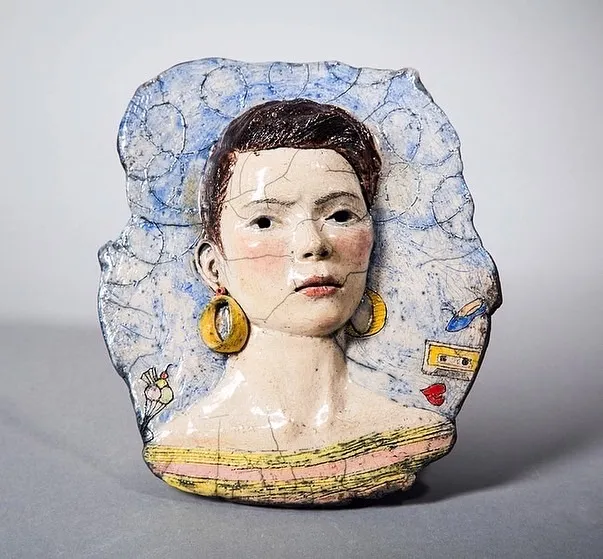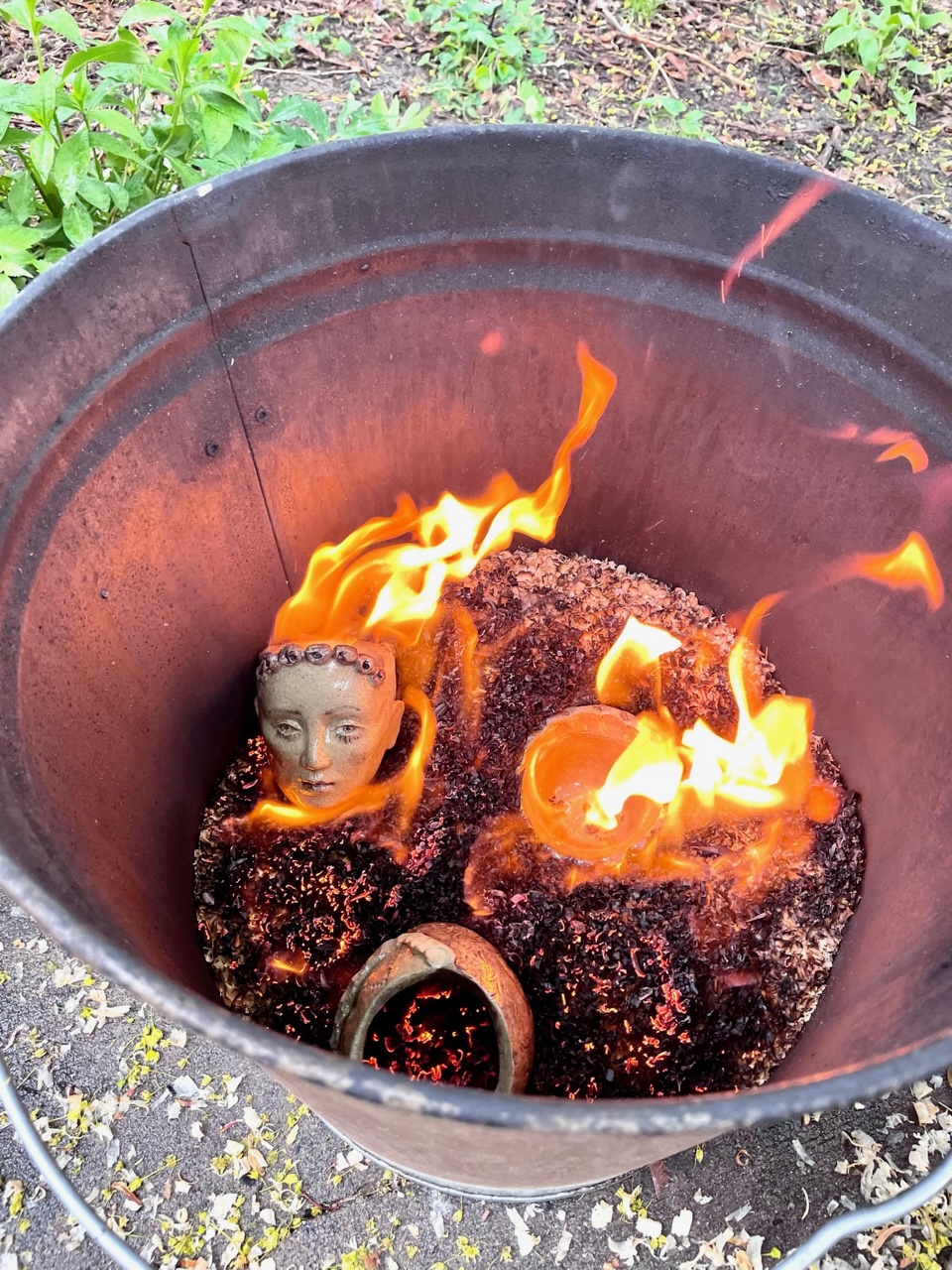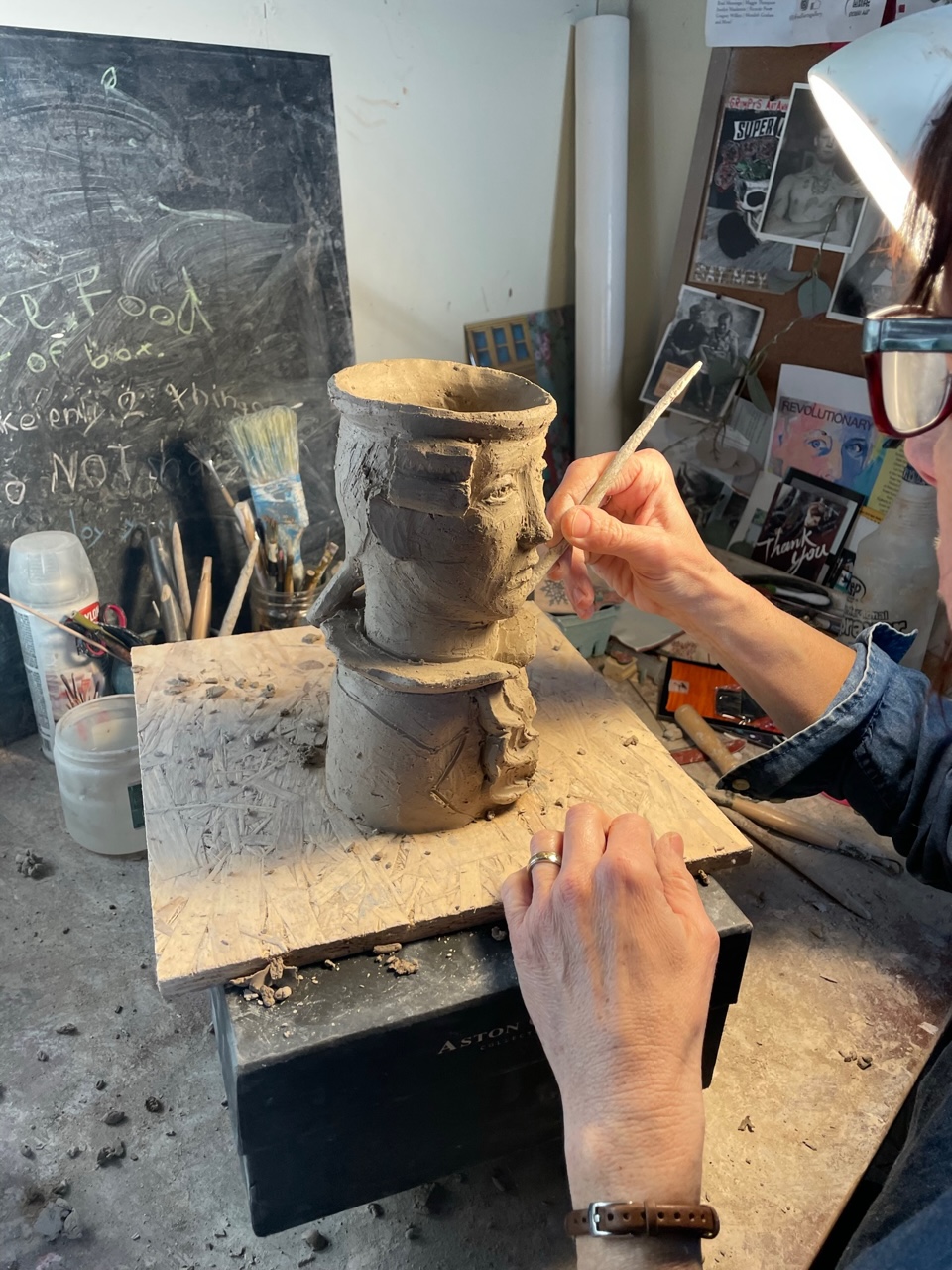Alright – so today we’ve got the honor of introducing you to Kordula Coleman. We think you’ll enjoy our conversation, we’ve shared it below.
Kordula, appreciate you joining us today. Risk taking is something we’re really interested in and we’d love to hear the story of a risk you’ve taken.
Thank you for inviting me to share about myself and my art!
I’ve taken many risks in my life – some without realizing until afterwards how big they had been. Thankfully nothing really bad or irreversible ever happened to me. The probably biggest risk I’ve ever taken was immigrating to the US from Germany at the age of 32, and getting married to my husband of now 23 years, a man I met online on a music email list, through a shared love of the English band ‘The Verve’. I had seen the band live in Düsseldorf and had been blown away by their performance and the musicians’ and especially the singer’s intensity and stage presence. I remember having the feeling, watching him on stage with his arms spread wide, that this intensity and passion was transferring itself to me, and telling me that I needed to get out of the rut my life had turned into at that point. So the next day I signed up for the band’s fan email list (this all happened before social media existed) and started joining in the conversation in my awkward high school English. The admin of the email list had put up a website where you could view pictures of the other members. I later learned that I caught my now husband’s eye, and he replied privately to a message I wrote to the group. That was the beginning of an extensive and more and more personal email exchange about music and life between me and Marc, and we ended up falling in love with each other. About a year after his initial message to me, we decided to meet, and that I was going to visit him in his hometown of St. Paul. To the amazement and also dismay of my family and friends, I followed through with this plan, and came to St. Paul in September of 1999. I fell in love with the Twin Cities, their music and culture scene, and most importantly of all, in person with Marc. He proposed during the 10 days of my visit, and we decided to get married the following year. After 12 months of long distance relationship, air travel, expensive phone calls and many emails, I packed up my things and immigrated to Minnesota in July 2000. We got married on October 8th 2000.
During my last year in Germany, most of my friends, and even my parents, had been supportive of our deepening relationship and marriage, but I also ran into some very blunt and openly voiced skepticism and sometimes downright negativity from people that didn’t think that what we had was real or substantial. Those comments hurt me and made me revisit those friendships – some didn’t make it through this phase. What was wonderful was the fact that I felt in my gut that our connection went deep, that we were indeed soulmates, were extremely happy and appreciative of having found each other, and would go to any length to make our relationship work, and last. That has proven true for 23 years, throughout all the difficulties stemming from coming from different families and cultures, both of us experiencing culture shock, and all the challenges that come with being an immigrant to Minnesota, and raising two children together. I am extremely grateful that I listened to my instinct 24 years ago, took the risk of leaving everything I knew behind, and got married to this man. I could not have hoped for a more supportive, patient, loving or loyal partner.
As always, we appreciate you sharing your insights and we’ve got a few more questions for you, but before we get to all of that can you take a minute to introduce yourself and give our readers some of your background and context?
I am a figurative ceramic sculptor living and working in Northeast Minneapolis. I was raised in Germany, became a ceramic apprentice after high school and then studied graphic design. I worked as an art director for five years at various German advertising agencies before coming to the US in 2000. Here I rekindled my love for sculpting with clay, a skill my mother had introduced me to when I was very young. It was difficult to find the time for art making when our children were little, but I never gave up on it, even though it was hard to feel inspired about it at times. As the children got older, my focus and energy came back more and more, and I feel that I have carved out a place for myself within the Twin Cities art community. Much of my art is about healing and emotional trauma – growing up in postwar Germany with the weight of the Nazi inheritance on my shoulders took an emotional toll. Also, my father was emotionally abusive, worsening during my teen years, which greatly impacted that time of my life, and my emotional health. I am working on forgiveness, and have made great strides in healing, and understanding how my growing up in the aftermath of WW2, with my father, has impacted me. Digging deep into my memories, being open about my scars, and making art about this process has helped very much with my healing.
Any advice for growing your clientele? What’s been most effective for you?
I think it’s important to get out into the in-person world with your art, and connect to venues and people that way. There are many entry level places in the Twin Cities that show your work even when you’re just starting out, like coffee shops, restaurants or community centers. You don’t have to start with a gallery. I highly recommend joining the Northeast Minneapolis Arts Association. Membership is open to all, and the frequently sent out newsletter is great at connecting artists who want to show their work with all kinds of venues. Participating in the annual Northeast Minneapolis Art-A-Whirl (organized by NEMAA ) as a guest artist at the Grain Belt Bottling House has also greatly helped me to grow my audience, make personal connections with fans, and find new supporters. And it also is just a great time, even though it’s a big effort for me to participate in the event, and emotionally and physically wearing at times. But to be visible in person to the arts community is essential to grow your clientele, in my opinion. Another great feature of being a NEMAA artist is that you get your very own online platform and store on their website, complete with shipping and payment portal.
Another very effective tool for advertising and selling my art has been social media. It even helps me stay motivated when I’m in a rut. I really enjoy creating captivating content and being cheered on by my audience, figuring out what draws in my audience or new followers the most, and creating reels with music, even if it can be time consuming, and the success not always consistent or rewarding. It also can be a challenge not to equate likes with how satisfied you should feel with a piece. But I’ve gotten better with managing those challenges over the years, and I have had many sales from just posting a newly finished piece. I strongly believe that consistently creating visually appealing posts about my work that tell an interesting story helps grow my audience and keep the existing audience engaged.
We’d love to hear a story of resilience from your journey.
The hardest time in my life was, unexpectedly, during the first months after our oldest daughter was born. Parenting in general seems to me to be a tale of becoming more resilient to stress. I had in no way been prepared to the amount of stress that was in store for me, so the beginnings of that journey were very rough. The first two weeks after our baby was born were still ok – we were feeling the usual mix of elation, amazement and mild panic at fully realizing that we were from now on completely and irrevocably responsible for this precious, fragile and tiny human being. But then our baby started crying from the moment she opened her eyes at around 6 am to late at night, when she would fall asleep from sheer exhaustion. She would nap during the day, but only when I carried her around outside in a baby sling. As soon as I turned the key to our front door, she would wake up and start crying again. The only things that would help were these walks, sometimes nursing, and letting her nap in an extremely noisy, vibrating baby chair. This was my first child, and the fact that she started to cry as soon as she clapped eyes on me made me feel rejected, unable to bond with her, and a failure as a mother. Me just having come to the US a few years ago also wasn’t helping matters – I hadn’t been able to form deeper friendships yet, let alone with other mothers. So I was all alone during the day with a baby that seemed to hate me. I remember a moment during an early morning walk when the thought flashed through my exhausted, anxious mind that we would have to give our baby up for adoption because we obviously didn’t know what we were doing. The moment passed, but I returned home even more distraught for having had such a thought. What I also discovered was that many of my new acquaintances did not want to hear about me being unhappy as a young mother. I was supposed to feel blessed and grateful. When I shared that I was not feeling any of that much of the time, many people cut the conversation short and refused to hear me. That only added to my feeling of isolation. My husband helped as much as he could in the evening and on weekends, but he was sleep deprived and exhausted as well, and I particularly remember one evening when we were both crying, feeling completely overwhelmed. I ended up going to my doctor and getting temporary prescriptions for an antidepressant and sleep medication, since my nerves were so worn down that I couldn’t sleep in those precious moments when the baby slept without me walking her around. The meds greatly helped me regain my mental balance, and my ability to relax. After about three months our daughter started to outgrow her colic, and I distinctively remember the very first smile she gave me – she was awake and looking at me without crying, and it was a momentous occasion for us both, I think. What this time showed me was that I hadn’t developed, in my 34 years, reliable self soothing and stress relief skills, and tools to deal with my anxiety. So I started a yoga routine that taught me how to relax my mind and calm down through movement, focus and deep breathing. Yoga saved my sanity, and lead to other healing self care practices, like reading Louise Hay and Eckhard Tolle (whom my husband discovered). This has helped me greatly through more tough times that followed on our parenting journey and our lives.
I remember those early months with our daughter like a hike through a deep and dark valley, with occasional glimpses of soft sunlight. I did make it through – with the help of my husband, meds and yoga. And, as I grudgingly have to admit, because of lessons learned from my father. Despite his abuse, he taught me to try everything and anything to solve a problem, and a stubbornness to survive and not give up – qualities that kept him alive during WW2.
Contact Information:
Email: [email protected]
Instagram: @kordulacolemansculptures








Suggest a Story: CanvasRebel is built on recommendations from the community; it’s how we uncover hidden gems, so if you or someone you know deserves recognition please let us know here.


